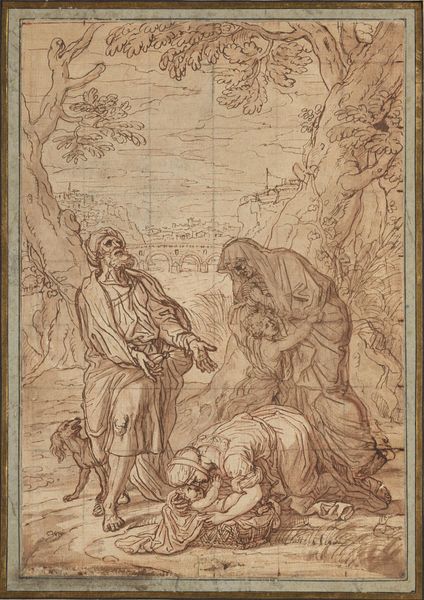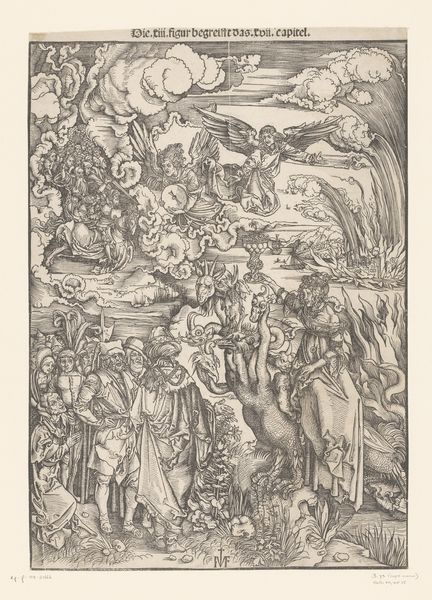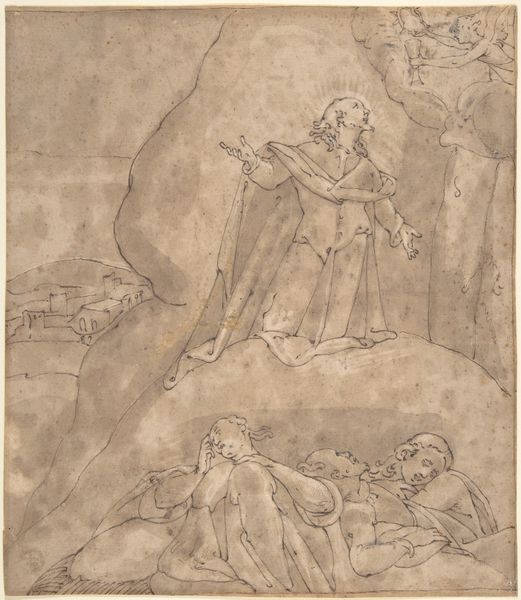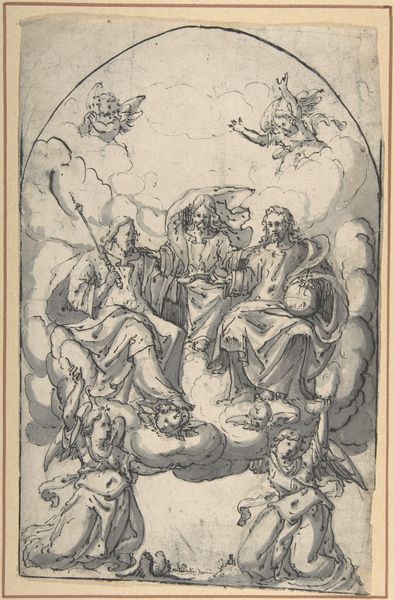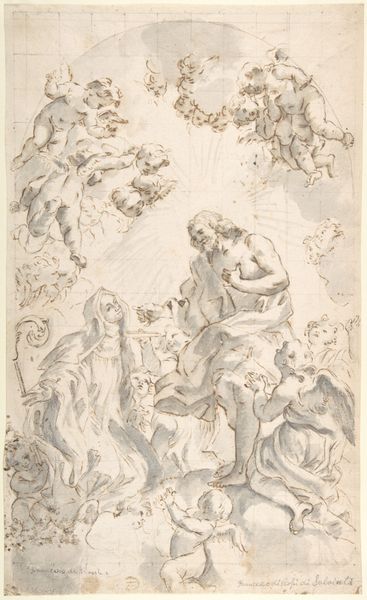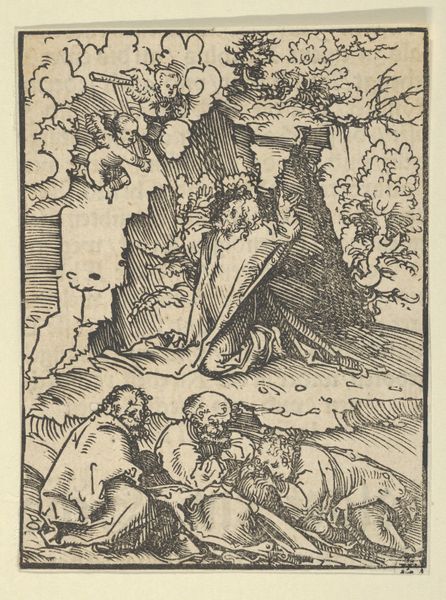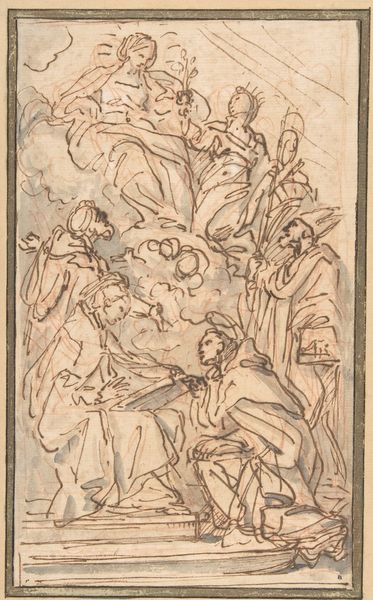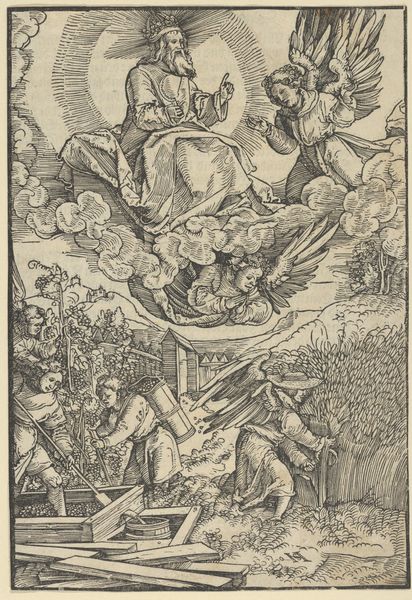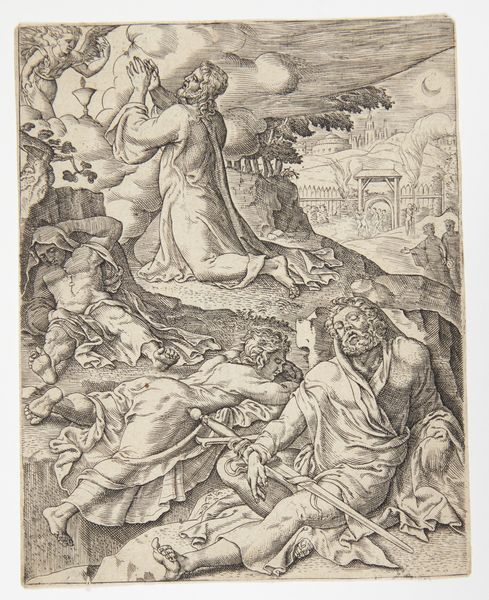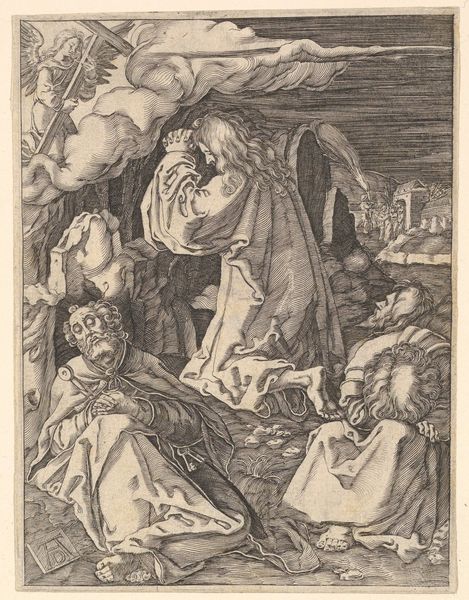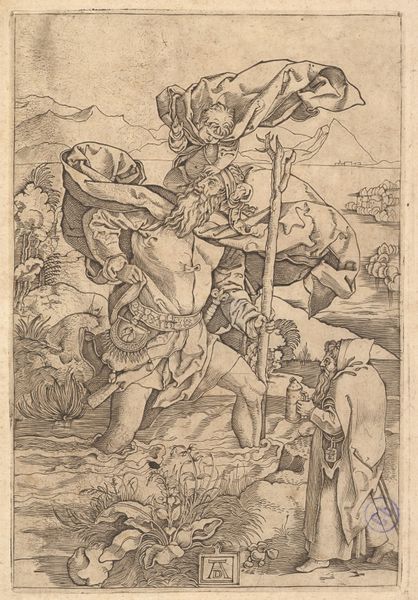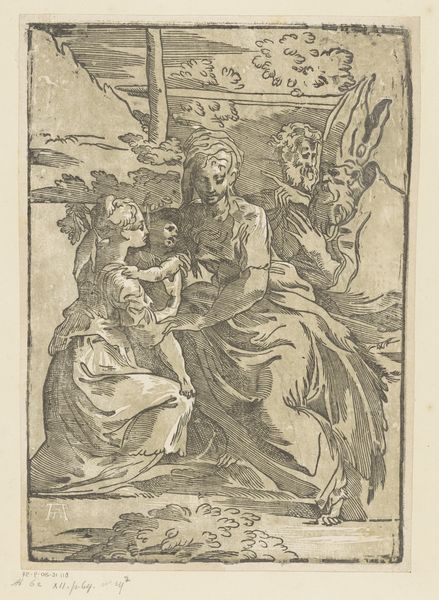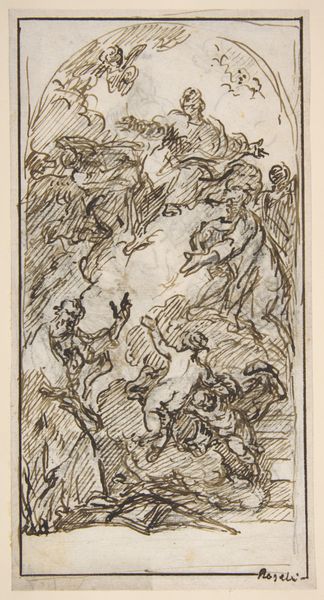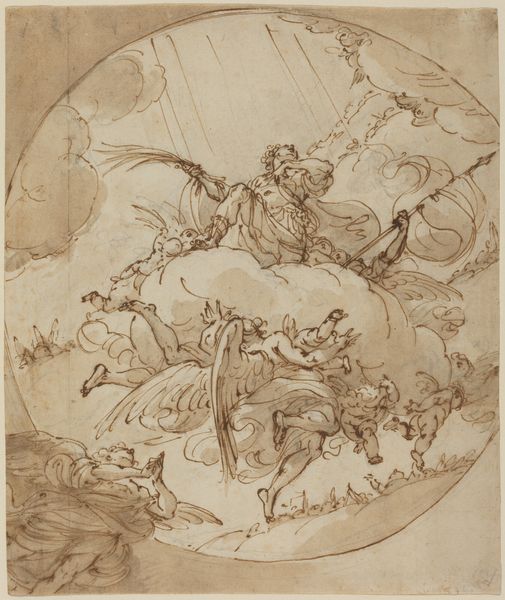
drawing, print, ink
#
drawing
#
baroque
# print
#
figuration
#
ink
#
history-painting
Dimensions: 6-5/8 x 9-5/8 in. (16.9 x 24.5 cm)
Copyright: Public Domain
Editor: This work, titled "A Bishop in Ecstasy," is attributed to an anonymous artist and was created sometime between 1600 and 1700. It’s currently at the Metropolitan Museum of Art, rendered in ink drawing. I’m immediately struck by the way the figures seem to float in a nebulous space. How might we begin to interpret the relationship between these figures formally? Curator: Let us consider the structure. Note the dynamic interplay between line and void. The artist uses a delicate hatching technique to create tonal variation, suggesting both form and ethereal space. Observe how the swirling clouds both support and threaten to engulf the figures. Is there a discernible hierarchy established through the composition itself? Editor: Yes, I see that the Bishop is more detailed, more sharply defined, while the figure above is paler. Are we to read that as indicating difference in status? Or importance? Curator: The sharpness with which forms are rendered is itself a key element. Note, for instance, the intricate folds of the Bishop's robes, contrasted with the looser rendering of the angels. Consider how this differential treatment draws the viewer's eye, creating focal points within the work. How does the linear quality contribute to the overall emotional effect? Editor: I think it adds to the feeling of lightness, like the figures might just fade away. It is almost ephemeral, yet clearly figural, detailed but almost translucent. Curator: Indeed. This careful control of line serves not merely to depict form, but to imbue the scene with a specific emotional resonance, don't you agree? Editor: I hadn’t considered the effect of the line work like that before! Thank you. Curator: A close analysis of form often unveils the underlying structure, as well as intention of a work.
Comments
No comments
Be the first to comment and join the conversation on the ultimate creative platform.
